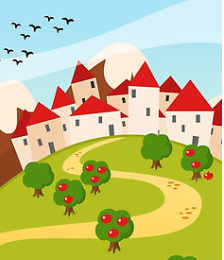Tiny Tots (0 to 18 months)
Music is the language of emotions and sharing in these musical sessions helps to develop the bond between parent and child. Music is integrated with play, learning and socialisation. Parents, the best teachers of all, are taught a repertoire of songs, poems and activities to use at home. Some are used for calming a child, others can be useful in stimulating the child to choose their clothing, dress themselves, eat their food, etc. There are songs to help develop a child’s eye movements, to teach body parts, to help encourage verbalisation. Fun for the child and for the parent, music is the common denominator for all sorts of learning experiences and development.
Toddlers (18 Months to 2 Years)
In these 45 minute sessions children are introduced to music in their environment. Through creative play, listening skills are developed. Singing, playing, dancing, story-telling…all are a means of opening the eyes, ears and minds of the youngster. Music helps the toddler to explore the world around him, but always to feel safe. To become independent enough to leave a parent’s side is a huge step in the development of this age group and songs/poems assist in this. The form of the music helps with language (understanding and verbalisation), sequencing and ordering skills - an introduction to maths, and is helpful in developing co-ordination, fine motor skills, whole body development. Music is a form of communication and for a child to learn this language and to use it creatively on their own is a wonderful gift to give them. It helps them to express their emotions.
Three-year olds
Meeting once a week for 45 minutes, children explore the world of music speaking, singing, moving, listening and playing percussion instruments. Various activities are used to assist the children to an understanding of these concepts when used with reference to music. Tone colour is explored through the use of a wide number of non-pitched and pitched percussion instruments.The ‘opposites’ are introduced:
- loud – soft
- fast – slow
- thick – thin
- high – low
Four-year olds
Some basic concepts are introduced (or revisited and extended)
Including
Difference between beat and rhythm
Reading of simple rhythmic notation
Simple musical terms and signs (ie. repeat, forte, piano)
Tone color (Pitched and unpitched percussion, Voices)
Introduction of time signatures
Introduction to pitched notation
Simple forms
Tone Colour (Pitched and unpitched percussion, Instruments of the orchestra, Voices)
Five-year olds
Some basic concepts are introduced (or revisited or extended)
Including
Each lesson finishes with a simplified folk dance. It is not expected that the children will master the correct movements and style of all of the dances, however it is expected that the enjoyment of their adult partner will flow on to them and that this role model will help to ensure the child’s love of this more structured type of movement.
More about us Registration